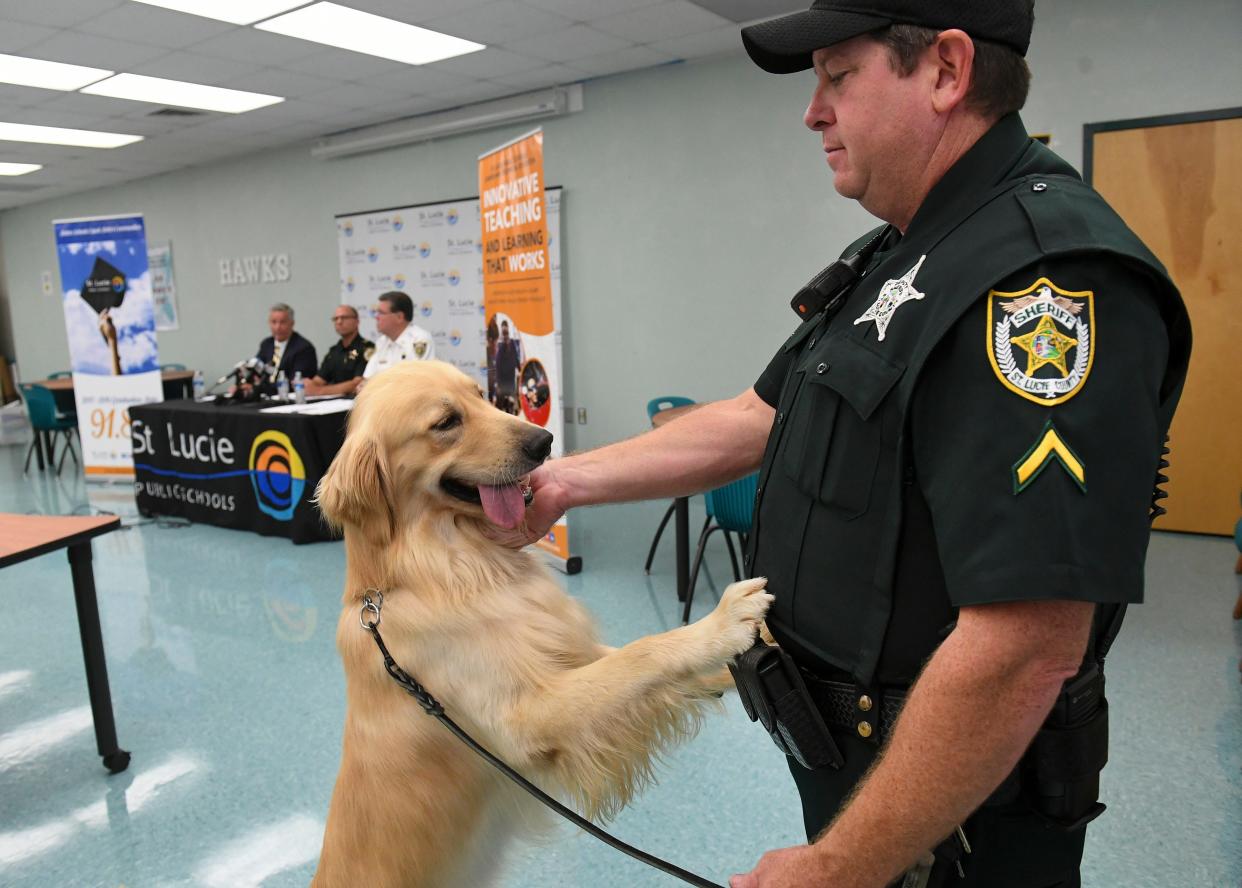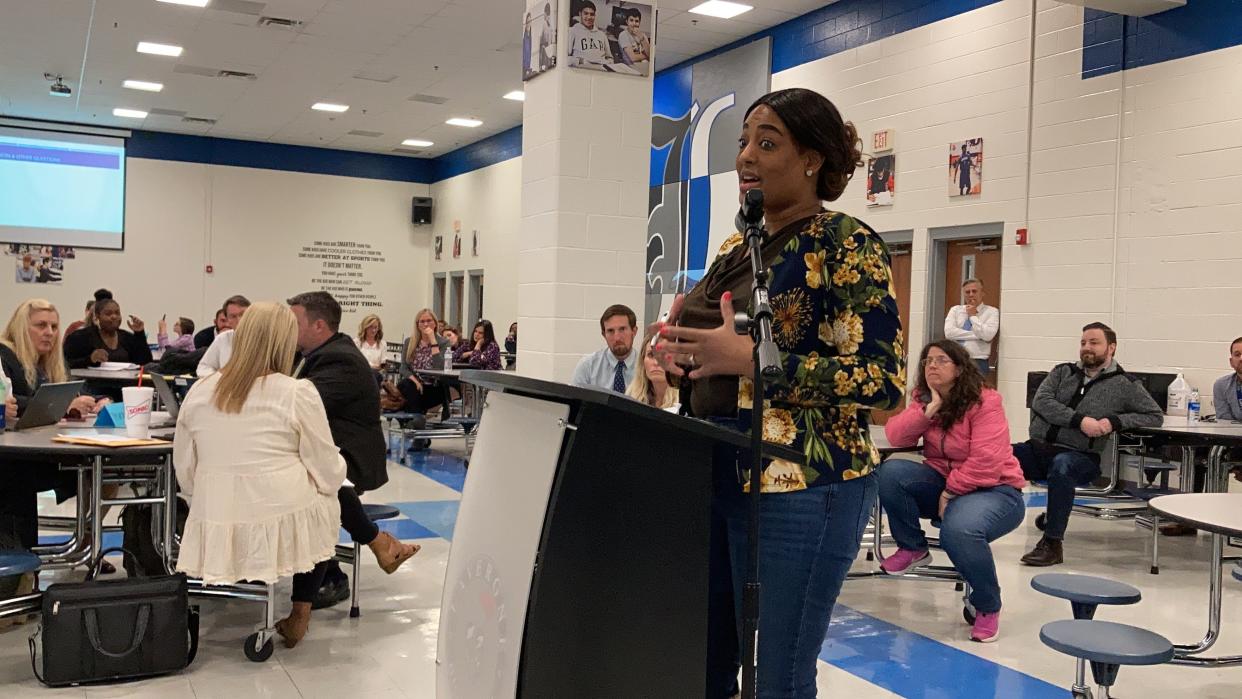Want to make sure your child's school is safe? These are the questions parents should ask
With gunfire in schools at an all-time high, though still rare,back-to-school season begins this year with many parents more concerned than ever about school safety.
While many schools and states have turned to physical safety measures such as extra police presence and metal detectors, others rely on social-emotional learning to improve school climate.
“You have these two genres – the zero-tolerance policies and making each school look like a little prison on one side. Ironically, you have – at the same time – the opposite vision of making school’s a more loving and caring and supportive place,” said Ron Avi Astor, a professor of social work and education at the University of California, Los Angeles.
He noted that schools are increasingly leaning on both methods simultaneously to address school safety – a route he said might not work.
“Are both of these views compatible? Can (students) feel like they belong … if their school is doing both? We don’t know for sure,” Astor said. “These are really, in some ways, scary times in our country, because it’s not a simple list that parents should think about. They have to balance all these issues.”
Experts, educators and advocates offered USA TODAY some of the questions parents should consider when assessing the safety of their children’s schools.
What is social-emotional learning?
School climate, which refers to students’ feelings of acceptance, appreciation and value in their school, is the most important factor for maintaining safety, said Aaron Kupchick, professor of sociology and criminal justice at the University of Delaware.
To maintain a positive school climate, experts stress the importance of teaching social emotional learning (SEL) – which prioritizes the development of social and emotional skills in students, including self-awareness, empathy and resilience. Over the past few years, SEL has been linked to critical race theory, and conservatives have said the practice as a form of “woke indoctrination.”
SEL at school is crucial for student safety and success, said Heather Reynolds, a professor of teacher education at State University New York, Empire State University.
“It impacts not only safety, but academics. It improves mental health and students feel safer. They’re more engaged, more likely to come to school and have a positive perception of school.”
Moms for Liberty: No to mental health care in schools, but it's Florida law
What creates a safe, supportive learning environment?
Experts said restorative justice – a philosophy that emphasizes a community-oriented approach to address wrongdoings, needs and responsibilities of the classroom – is also crucial to a safe school environment.
The practice – which has long been used by some indigenous communities – is an alternative theory of justice that focuses on mediation and agreement rather than punishment. Rather than relying on punitive measures like suspensions or detention, restorative justice – which has been criticized by some conservatives – centers on rebuilding relationships after harm has been done.
“These are really, in some ways, scary times in our country, because it’s not a simple list that parents should think about.
Ron Avi Astor, a professor of social work and education at the University of California, Los Angeles
But Reynolds and Astor expressed concern about the way restorative justice programs have been implemented at schools, noting they are often inconsistent across schools, grade levels and even classrooms.
“Someone’s doing trauma-informed work in fourth grade. Someone’s doing restorative justice practices in eighth grade. Someone’s doing mental support or community circles in a 12th grade advisory period – but all of these things are not connected,” Reynolds said. “We think that’s great, but what about the connections? Because once the kid leaves that classroom, they may never be exposed to that again.”
Astor encourages schools to pick one program that fits the needs of the school’s environment.
“Parents really need to be aware of what is being done to create a positive school climate. What’s being done to support nonpunitive disciplinary practices? What’s being done so that my kid has the skills to exist in the world?” Reynolds said.
What funding is available in your district or state?
Over the past year, federal and state initiatives have allocated millions of dollars districts can use to enhance school safety.
The Bipartisan Safer Communities Act was signed into law by President Joe Biden last year and allocated $15 billion in funding for schools to expand mental health and early intervention programs as well as improve physical safety and train school personnel. Grant applications are expected to open in March 2024. In addition, schools in Utah can apply for state grants to improve the safety measures on their campus. Ohio's most recent round of K-12 School Safety Grants sets aside more than $200 million for school safety.
Can new federal money help? US kids face mental health crisis amid school psychologist shortage.
Does your campus have a school police officer?
Police officers at schools, or school resource officers (SROs), are sworn law enforcement officers who work either part time or full time on campus and have a direct relationship with local law enforcement.
States such as Tennessee have allocated millions to hire more SROs, and cities such as Norman, Oklahoma, have pledged to have an SRO in every school by the end of the upcoming academic year.

Kupchick said there is mixed evidence on the efficacy of police presence at schools, though “a majority of evidence suggests that they do not make schools safer.”
“We see that the presence of officers can, in unintended and subtle ways, affect the school’s social climate,” Kupchick said.
Increased police presence in schools can lead to higher suspension rates and greater number of law enforcement referrals and arrests.
“School environment and policing don’t always go well together,” Kupchick said. “Sometimes, when we put police officers in schools, the school becomes less a site where we’re hyperfocused on student emotional and academic wellbeing and more a site of law enforcement.”
Who can carry guns on your campus?
Scott DiMauro, president of the Ohio Education Association, said his union's biggest concern is the presence of guns on campus. In Ohio, the state allows teachers to carry guns on school grounds, and a new law last year cut required training time from 700 hours to 24.
“We think that’s the wrong direction. Teachers already have a full-time job. They are focused on the learning and success of their students,” DiMauro said.
About 30 states have passed similar legislation allowing teachers to carry guns, according to data collected by the Giffords Law Center. Sixteen states prohibit the practice.
Who is suspended at your school?
Exclusionary discipline – when students are removed from the classroom as a form of punishment through suspensions and expulsions – has been used as a tool to maintain school safety and create a positive learning environment for other students.
But experts warn that pushing students out of their own classrooms is ineffective and disproportionately affects students of color and students with disabilities.

Although schools’ reliance on out-of-school suspensions has decreased since its peak in the 2010s, racial disparities among who get suspended persist. Black students make up 15% of public school enrollment but accounted for 38% of total suspensions in 2018, according to the federal Civil Rights Data Collection.
What about bullying and violence prevention?
Rates of bullying, fights and drug use in schools have significantly decreased over the past 20 years, Astor said, and a stronger connection to community resources, the hiring of more social workers and prioritization of student empowerment have driven the decline.
A study Astor co-wrote analyzing California schools over an 18-year period found that student victimization and weapon use has substantially decreased.
“Oftentimes, they see on the news a shooting that happened within a school. It’s very salient and very awful," said Justin Heinze, associate professor at the University of Michigan and co-director of the National Center for School Safety. "But, what I try to remind parents is that severe violence within schools is actually pretty rare.”
This article originally appeared on USA TODAY: With school safety a growing concern, what should parents be asking?
